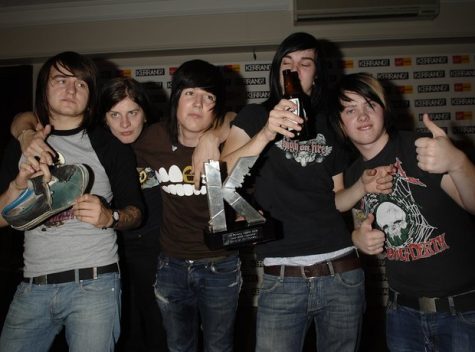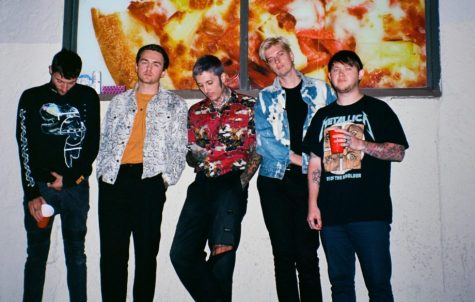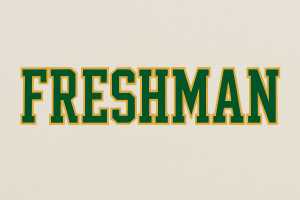The Evolution of Bring Me the Horizon
May contain sensitive content. Viewer discretion advised.

October 1, 2018
English rock band Bring Me The Horizon (BMTH) is known for its hardcore sound, deeply poignant lyrics, and reckless attitude. Having been around since 2004, the band has released an extremely varying collection of music, ranging from straight-up deathcore to softcore metal and even rock-pop. Fans come and go for the band considering that the great evolution of their sound may hit phases that appeal to different types of people. BMTH is composed of five members: frontman Oli Sykes, keyboardist Jordan Fish, percussionist Matthew Nicholas, bassist Matt Kean, and guitarist Lee Malia. Jordan Fish is the mostly recently conducted member, his arrival marking a distinct change in the band’s sound—some original BMTH fans dislike it, but others realize the shift in sound for what it truly is: timely and awe-inspiring.
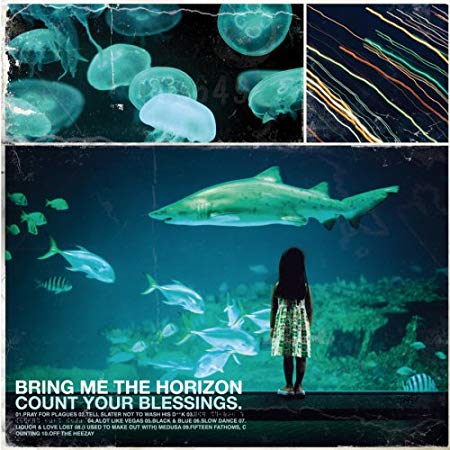 Starting with the band’s strictly death-metal era, debut album Count Your Blessings was released in 2006, immediately pulling in a small but tight following of fans attracted to the underproduced deathcore sound and harsh screamo vocals—if you strain your ears, you may be able to distinguish dark lyrics that adhere to the style of metal bands. Although the album was widely panned upon its release by critics and public alike (for apparently being watered-down death metal), when BMTH was able to develop a substantial fanbase through the release of subsequent albums, fans started to acknowledge Count Your Blessings lovingly; leading track “Pray for Plagues” is a certified fan favorite. Despite the agreed-upon opinion that it is by far BMTH’S worst album, Count Your Blessings can be excused for its unremarkable quality; after all, it is the byproduct of a few Yorkshire 18 year-olds’ drunk nights recording music.
Starting with the band’s strictly death-metal era, debut album Count Your Blessings was released in 2006, immediately pulling in a small but tight following of fans attracted to the underproduced deathcore sound and harsh screamo vocals—if you strain your ears, you may be able to distinguish dark lyrics that adhere to the style of metal bands. Although the album was widely panned upon its release by critics and public alike (for apparently being watered-down death metal), when BMTH was able to develop a substantial fanbase through the release of subsequent albums, fans started to acknowledge Count Your Blessings lovingly; leading track “Pray for Plagues” is a certified fan favorite. Despite the agreed-upon opinion that it is by far BMTH’S worst album, Count Your Blessings can be excused for its unremarkable quality; after all, it is the byproduct of a few Yorkshire 18 year-olds’ drunk nights recording music.
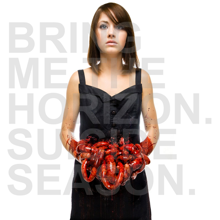 2008’s Suicide Season has a similar but improved sound. Growling and slightly disturbing vocals are still dominant, but the production value is boosted–even if the essential sound of the album remains unchanged to past tunes. The album also boasts improved lyrical content, contributing to the slight growth of fans during this era of BMTH. There is no doubt that the album is better for the band, producing scarily catchy fan-favorites, most notably “Chelsea Smile” and “Diamonds Aren’t Forever.” Although title track “Suicide Season” shows no uniqueness concerning essential sound, it does show thoughtful production by the band; the track has a running time of 8:17 and evolves to a new level by the end. It really depends on your affinity to metalcore music on whether or not you’ll like the album, but for the darker music enthusiasts it was a success.
2008’s Suicide Season has a similar but improved sound. Growling and slightly disturbing vocals are still dominant, but the production value is boosted–even if the essential sound of the album remains unchanged to past tunes. The album also boasts improved lyrical content, contributing to the slight growth of fans during this era of BMTH. There is no doubt that the album is better for the band, producing scarily catchy fan-favorites, most notably “Chelsea Smile” and “Diamonds Aren’t Forever.” Although title track “Suicide Season” shows no uniqueness concerning essential sound, it does show thoughtful production by the band; the track has a running time of 8:17 and evolves to a new level by the end. It really depends on your affinity to metalcore music on whether or not you’ll like the album, but for the darker music enthusiasts it was a success.
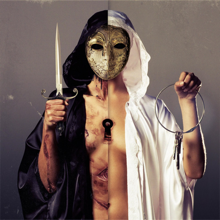 Third album, There Is a Hell, Believe Me I’ve Seen It. There Is a Heaven, Let’s Keep It a Secret, is a sort of darker, moodier continuation of Suicide Season that was released in 2010. Again, it shows an increased thoughtfulness and production value compared to previous efforts. Concerning evolution of sound, the change is slight yet distinguishable. Words are easier to pick out from the screaming vocals, but it’s still pretty hardcore and not for the light-of-heart. A fan favorite that this album gifted BMTH followers is “Blessed With A Curse.” Although the album isn’t that special, it was a great success with the public society of rockers and helped launch BMTH towards the mainstream, an uncharted territory that they would soon be dwelling in.
Third album, There Is a Hell, Believe Me I’ve Seen It. There Is a Heaven, Let’s Keep It a Secret, is a sort of darker, moodier continuation of Suicide Season that was released in 2010. Again, it shows an increased thoughtfulness and production value compared to previous efforts. Concerning evolution of sound, the change is slight yet distinguishable. Words are easier to pick out from the screaming vocals, but it’s still pretty hardcore and not for the light-of-heart. A fan favorite that this album gifted BMTH followers is “Blessed With A Curse.” Although the album isn’t that special, it was a great success with the public society of rockers and helped launch BMTH towards the mainstream, an uncharted territory that they would soon be dwelling in.

2013 saw BMTH’s induction of Jordan Fish, abandonment of nu-metal, and release of widely-acclaimed album Sempiternal. It was a good year for them. Still branded by a hardcore sound for the majority of the album, Sempiternal also boasts more mellow and almost psychedelic tracks that are surprisingly well executed for a metalcore band. The screamo vocals are more subdued, yet still prominent; it works for most of the songs. It was a wild success in the rock scene, winning over fans, critics, and awards. This album was made during a drug-induced and painful period in Oli Sykes’s life, and he uses it to cope with a lot of pain, impregnating the music with passion and torment. Highlights and fan-favorites include “Can You Feel My Heart”, “The House Of Wolves”, “Sleepwalking”, “Go To Hell, For Heaven’s Sake”, “Shadow Moses”, “Antivist”, and “Hospital For Souls”(that’s a big chunk of the album). Jordan Fish not only provides a graceful keyboard to complement the tracks, but wonderful backing vocals to aid Oli Sykes’s slightly rough voice (after all, he was flat-out screaming on stage for six years straight.) Although the album isn’t perfect–mostly due to cliche lyrics and repetitive production–it was definitely a right step forward for BMTH and a triumph for their fans.
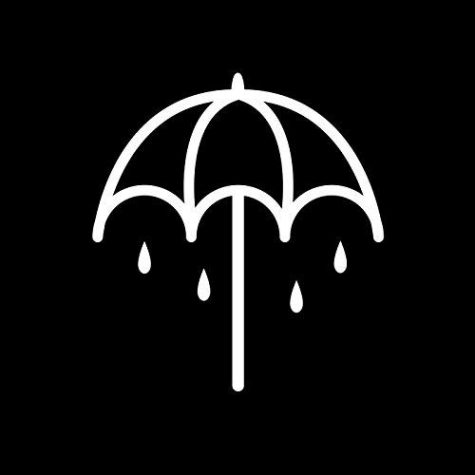 Following the release of Sempiternal, Oli Sykes went through some personal hardships and decided it was time for rehab and recovery. When he got out, he “didn’t wanna f****** scream anymore.” He “wanted to sing it from the rooftops.” 2015’s That’s The Spirit was the result. The title is taken from the common saying that you hear when the circumstances aren’t cheerful but there’s nothing else to say if you want to keep going. This spoke to Oli; he wanted this album to be optimistic, or at least as optimistic as an album whose subject matter is depression can be. The concept of That’s The Spirit is a celebration of depression, and it’s beautiful.
Following the release of Sempiternal, Oli Sykes went through some personal hardships and decided it was time for rehab and recovery. When he got out, he “didn’t wanna f****** scream anymore.” He “wanted to sing it from the rooftops.” 2015’s That’s The Spirit was the result. The title is taken from the common saying that you hear when the circumstances aren’t cheerful but there’s nothing else to say if you want to keep going. This spoke to Oli; he wanted this album to be optimistic, or at least as optimistic as an album whose subject matter is depression can be. The concept of That’s The Spirit is a celebration of depression, and it’s beautiful.
Concerning sound, everything on this album is experimental for BMTH. Electronic effects and edited vocals, as well as an increased prominence of Jordan’s voice, offer wonderful components to the album. This is the first BMTH album that is composed entirely of clean vocals—you can understand pretty much every word! That being said, usually every chorus transitions from soft vocals to a screaming, desperate influx of emotion growled by Oli and Jordan. However, the harsh vocals are somehow beautiful and create uniqueness in the tracks. You can usually expect some kind of explosion of hard sound, but for the first time in BMTH’s career, you can be sure that it won’t hurt your ears.
The leading track and highlight is “Doomed”, a tormented song chronicling Oli’s trek of recovery when the circumstances looked too dire to resolve: “You must of made some kind of mistake/ I asked for death, but instead I’m awake/ The devil told me no room for cheats/ I thought I sold my soul, but he kept the receipt/ So leave the lights on I’m coming home/ It’s getting darker but I carry on/ The sun won’t shine here, it never did/ And when it rains, it f****** pours/ But I think I like it/ And you know that I’m love with the pain/ I think I like it.” Poignant lyrics such as these overflow the album with emotion. It’s awe-inspiring how much a tough situation can change you and your art— what contributed to the subject matter for That’s The Spirit may have been a nightmare, but the pain Oli sings of is given a beautiful twist.
Despite the gorgeous artistry of That’s The Spirit, most original fans of BMTH hated the album upon its release. That is understandable, though—this album is so different from previous ones that it’s kind of hard to believe. We are no longer looking at post-hardcore death metal—we’re looking at a balance between hard and soft rock, the tracks varying in that sense but sticking together through lyrical content and general production. Still, the fans of BMTH viewed the album as a descent into the mainstream rather than a welcome change of pace. Fans also criticized Oli’s lack of vocal execution and reliance on Jordan, who many now view as the actual lead singer (with Oli just serving as the band’s face). Many stopped respecting the band, but some would argue that–if anything–the band deserves to be given more respect after the release of That’s The Spirit.
Releasing the album was a huge risk, and the members of BMTH were well aware of that. It not only risked the departure of a huge amount of the original hardcore fandom, but it risked a poor production— it was the first time the band had completely produced an album themselves (not wanting to compromise their sound) and it was completely uncharted territory; it was like BMTH was starting over. It was a wild success, though, for music intellectuals of all genres and for critics who appreciate BMTH’s timely shift and embracement of mainstream rock.
The reality is that the members of BMTH don’t care what you think and will release whatever they feel that they need to at the time— that means that they’re going to delve deeper into mainstream rock and flip you off when you boo them. Upcoming 2019 album, entitled Amo (meaning love and ammunition), is expected to deliver a poppier sound than BMTH has ever put out. The members have stated that they’ve always wanted to try something a little lighter, and now they feel like it’s the correct time–to the dismay of Count Your Blessings groupies and to the delight of That’s The Spirit enthusiasts.
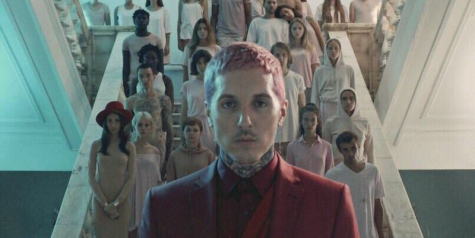
In 2017, 2004-2013 was released, the cover being a gravestone with those years inscribed–signifying the death of BMTH’s metal days for good. It is a compilation album of the band’s highlights during that era. Listening to that album and That’s The Spirit as a pair, you can easily see that the evolution of sound is shocking and almost unfathomable. Amo is going to be even more surprising, based on the release of the first and only single, “MANTRA.” “MANTRA” is definitely pop-rock, but is still clearly branded as a BMTH song (there is a a metal-core type scream in the middle of the song). Hype for the album is unbelievable, and love for “MANTRA” by the band and their loyal fans is undeniable. Although Oli stated that “MANTRA” isn’t truly representative of Amo, it still builds up a mountain of anticipation for the ultra-new poppy sound; “MANTRA” is “Blank Space” compared to “Pray For Plagues.”
BMTH is a band worthy of huge respect considering their roots, growth, and open attitude. Although it will be near impossible to top That’s The Spirit, Amo looks like it has a lot of potential to reinvent BMTH and provide music for old and new fans alike.
